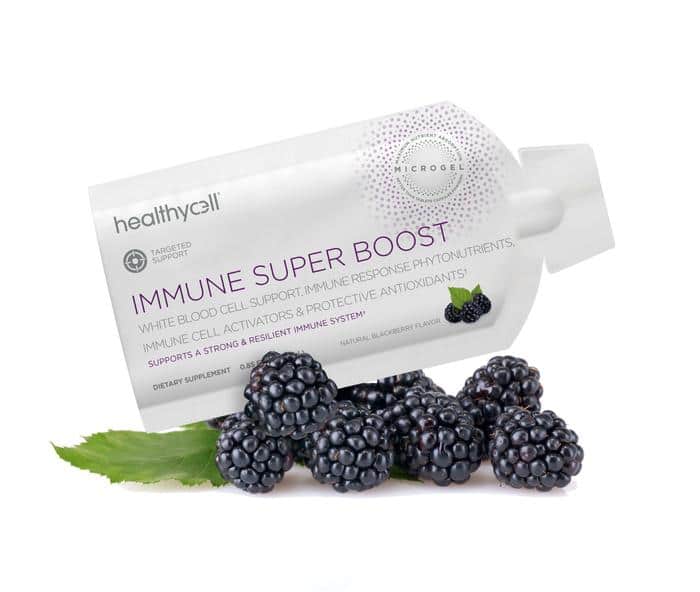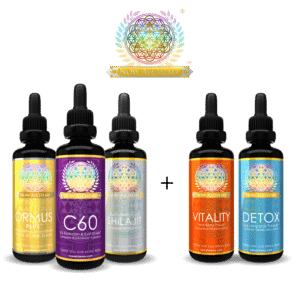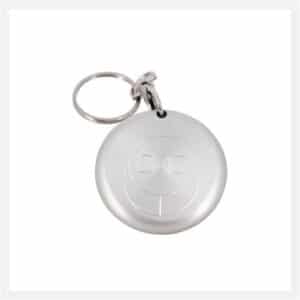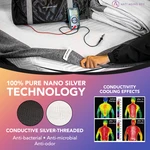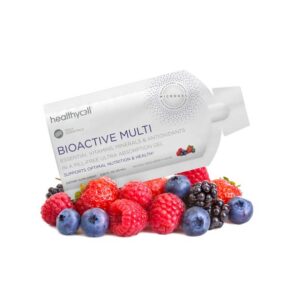Unfortunately, if you take cell health supplements to replenish your body’s supply of micro- and phytonutrients, you might have been taken for a ride. In 2017 according to a statement from the office of the New York State Attorney General, 4 out of 5 brand name supplements sold at major retailers through the state contain virtually no amounts of their advertised herbal ingredients.
Is there any way for the average person to tell if their cell health supplements actually contain the minerals and vitamins the manufacturers say they do? Eric Schneiderman, attorney general for New York, explained that four major retailers – Walgreens, Walmart, Target and GNC – were all selling products that did not contain detectable levels of ingredients listed on their labels.
“This investigation makes one thing abundantly clear: the old adage ‘buyer beware’ may be especially true for consumers of herbal supplements,” Schneiderman said in a statement.
In addition to selling products that falsely advertise their ingredients, the attorney general’s injunction also claimed that some of these supplements actually contain unlisted ingredients, like powdered legumes, that are liable to cause allergic reactions in sensitive individuals. In particular, Schneiderman found that supplements claiming to contain ginseng, ginkgo biloba, St. John’s wort and Valerian root most likely did not.
“This may help force the unwanted products out of the industry and off the market.”
The attorney general’s move represents a paradigm shift in the fight against fraudulent herbal supplements. Instead of pursuing legal action on the manufacturers responsible for producing inactive and potentially dangerous supplements, Schneiderman is placing the liability on stores that stock illegal products on their shelves. While the Food and Drug Administration has pursued small companies in the past for making false claims or producing harmful supplements, this may help force the unwanted products out of the industry and off the market.
In fact, Congress may already be acting on that goal. The Hill reported that Senators Dick Durbin (D.-Ill.) and Richard Blumenthal (D.-Conn.) are already lobbying the FDA to extend Schneiderman’s injunction against intentionally misrepresented supplements to retailers across the country.
“The apparent widespread sale of fraudulently labeled dietary supplements by four major national retailers should be a major wake-up call that the industry is in desperate need of additional oversight,” Blumenthal said in a statement, as quoted by The Hill. “Americans spend billions of dollars a year on dietary supplements, and they deserve to know what they are buying.”
Any progress Congress makes in cleaning up the nutritional supplement industry is likely to take months if not years, so you might want to start thinking about other ways you could weed out the ineffective products from the health supplements that provide your body with essential sources of vital nutrients. Consumer Reports explained that it’s usually best to find a reputable manufacturer that has a long track record of working in the industry as opposed to companies you’ve never heard of before. Any company can get products on shelves, but it takes years to build up trust with consumers – look for companies that have long histories of excellent customer service.
It’s also a good idea to keep a close eye on websites for the National Institutes of Health and the National Center for Complementary and Alternative Medicine. These agencies regularly review new supplements so you can be sure that what you’re buying is what you’re paying for. Otherwise, you might be wasting money every month on a brand new bottle of placebo pills.
In 2019, for the first time in 30 years, the Food and Drug Administration (FDA) has published new guidelines for the Recommended Daily Intake (RDI) and Daily Values (DV) for most vitamins and minerals. These changes, in addition to other updates being made to our food nutrition labels, are forcing manufacturers to make some serious changes to their products. In order to meet the mandatory deadline of January 1st, 2020 for these new labeling guidelines, manufacturers will have to change their formulas or update their packaging in order to comply. While this label overhaul may be a headache for food, beverage, and supplement companies, it’s long overdue and in the best interest of consumers. Imagine if we still subscribed to low fat and high carb eating pattern that was once a popular dieting trend of the 80’s and 90’s. Most likely, many of us would be suffering from some serious sugar-related consequences had we continued to consume those chemical-laden, fat-free foods.
The FDA’s proposed changes to the daily values assigned to the B vitamins were the most significant out of all of the updates.[8] The FDA found that deficiencies in these vitamins were not a public health issue and that the former DV levels were excessively high and essentially unattainable through diet alone. However, several sub populations are at a greater risk of having low levels of certain B vitamins. For example, plant-based eaters are more likely to experience a vitamin B12 deficiency, since it is found primarily in animal products. Vitamin B6, which is involved in immune system support, is beneficial for those with a suppressed immune response. Folate or folic acid is necessary in higher doses for pregnant women, as the nutrient helps to prevent birth defects. Finally, most of the B vitamins impact energy metabolism, which is useful for active individuals.
Since the new daily values have been established based on the needs of 50 percent or more of the average population consuming a 2,000 to 2,500 calorie diet, these more specific needs were not considered when making the final recommendation.
In addition to the decreased daily values for the above vitamins and minerals, the FDA also reduced the recommended values for both chromium and selenium. Chromium, which was reduced by 70 percent, and selenium, reduced by 21 percent, appeared to be based on two primary factors. Low levels of either mineral were not an apparent public health concern for the general population. However, adequate intake levels of chromium and selenium have been shown to provide substantial health benefits to those with conditions such as diabetes or who have a suppressed immune system. While there is evidence to suggest the protective effects of both of these nutrients, for the general population the formerly high daily value levels were not necessary. Additionally, the FDA’s updated recommendation for these minerals could be indicative of the low levels of both nutrients in natural food sources, meaning the previous daily values would be nearly impossible to reach through diet alone.
The FDA’s update to food labeling and nutrition requirements represents a shift in our eating patterns and a better understanding of our nutritional needs.[12] With changes to the Recommended Daily Intake, the Reference Amount Customarily Consumed (which reflects more accurate serving sizes), the units of measurement, and the Daily Values for many essential vitamins and minerals, consumers will have a lot to consider when choosing their foods and supplements. So what is the best way to ensure you’re nutrition is reflective of these new standards?
Consumers must first be aware of these updates and prepare to spend some extra time scrutinizing nutrition labels. Not only will we have to compare the nutrient values of our foods and supplements to the new recommended values, but in the cases of vitamin D, E, A, niacin, and folic acid, we will have to apply a bit of arithmetic to convert the old units to the new in order to calculate the daily value.
For those of us who like to make informed decisions when it comes to the foods and supplements we consume, this transition period to the new nutrition guidelines will make grocery and supplement shopping a more cumbersome process. One simple way to avoid the nutrition label nuisance is by selecting items that have already implemented the new FDA standards for the packaging of their products.
For example, the MICROGEL™ multivitamin Bioactive Multi by Healthycell has been formulated specifically with the new FDA guidelines in mind to bring consumers a supplement that is as innovative in form as it is in function. Companies like Healthycell that have designed products that adhere to the FDA’s latest nutritional recommendations are proving the value they place on the last 30 years of scientific research that has gone into the FDA nutrient and nutrition label update as well as their customers’ overall well being. So if you’d like to save yourself from having to compare and calculate your supplement’s nutrition based on the FDA changes, your best bet is to go with a product like the Bioactive Mutli by Healthycell.
MICROGEL™ is the next-generation ultra-bio availability nutrient delivery technology that replaces tablets, capsules, and powders. It is delivered in convenient, single-serve, easy to swallow gel packs (otherwise known as gel sachets). Formulated by world-leading nutritional scientists, this unique gel matrix ensures maximum absorption of the suspended active nutrients into the bloodstream, and then into cells, where they have a biological effect. MICROGEL™ includes the following advantages:
MICROGEL maximizes nutrient absorption in two primary ways:
- Particle size: Extremely small, soft, micro-sized nutrient particles are created using emulsification and high-sheering processes. These particles are small enough for our small intestine to absorb into the bloodstream.
- These nutrients are then infused into a gel matrix to create a protective suspension. When ingested, this gel matrix protects nutrients from the acid in our stomachs that denature them (converts them from active to inactive forms). The gel matrix then releases the ultra-bio available nutrient particles in the small intestine for absorption.
The gel matrix that makes up MICROGEL includes gut-healthy natural ingredients such as soluble fiber, citrus pectin, and acacia gum (which are also prebiotics) that assist in improving micro-nutrient absorption. The few other nutrition gel supplements on the market use gel-forming ingredients like guar gum that may actually reduce the absorption of nutrients, having the opposite of the intended effect.
Produced exclusively in the USA from natural ingredients, MICROGEL also offers a more natural way to supplement the diet by eliminating the need for synthetic binding glues, fillers, coatings, and anti-caking agents listed as “other ingredients” in many supplements.
Lab data shows us that most supplements contain nutrients in the form of solid particles that are 10 to 100 times too big to absorb — like little grains of sand. In an attempt to compensate, many supplements contain more than 10 times the recommended daily allowance of nutrients, potentially doing more harm than good. Even worse, there are some scientists who believe these hard, solid particles, the same size as sandpaper, may be scratching the lining of our gut, and possibly causing inflammation. More studies should be done to determine if this is really happening.
There is a growing body of research that increasingly supports the ability of microgels to boost the bio-availability of nutraceuticals compared to traditional tablet and capsule supplements. Healthycell has sponsored an independent clinical study comparing the active nutrient absorption from tablets to MICROGEL.
Currently, Healthycell is the only company producing MICROGEL™. The first product produced with this technology is the Bioactive Multi, a daily nutrient foundation for optimal health. The second product was Vegan Essentials, 30+ daily essentials for plant-based eaters. Other microgel products include Healthycell’s REM Sleep and Focus+Recall.

